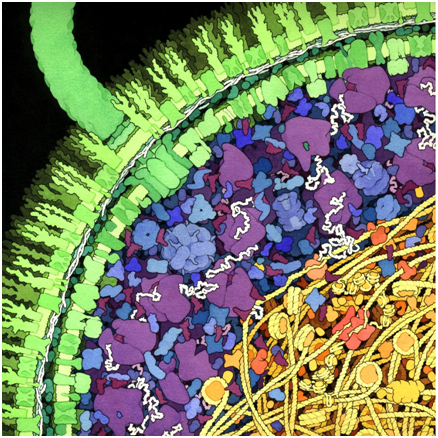14: Genomics and Systems Biology
( \newcommand{\kernel}{\mathrm{null}\,}\)
Imagine that you could identify and quantify every molecule within a cell (Figure 11.1) in a single assay. You could use this ability to better understand almost any aspect of biology. For example, by comparing the molecular profiles of plants that differed in their resistance to drought, you might discover which combination of genes or proteins makes a crop drought tolerant. Although it is not currently possible to study literally every molecule in a cell in a single experiment, recent advances in molecular biology have made it possible to study many genes (or their products) in parallel.

Figure 11.1: An artist’s depiction of part of an E.coli cell, showing many different types of molecules in their typical abundance. mRNA appears as white lines associated with purple ribosomes, while DNA and proteins such as histones are yellow. (Goodsell, Scripps-EDU)
- 14.2: DNA Sequencing
- DNA sequencing determines the order of nucleotide bases within a given fragment of DNA. This information can be used to infer the RNA or protein sequence encoded by the gene, from which further inferences may be made about the gene’s function and its relationship to other genes and gene products. DNA sequence information is also useful in studying the regulation of gene expression.
Contributors
Dr. Todd Nickle and Isabelle Barrette-Ng (Mount Royal University) The content on this page is licensed under CC SA 3.0 licensing guidelines.


